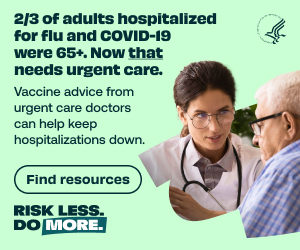We’ve written – in these pages and elsewhere – about the great potential of electronic health records to improve emergency care. That potential includes better access to past histories and medications, easier coordination among the care team, improved guideline adherence and evidence-based practice through intelligent decision support. And yet, as the country belatedly moves to adopt EHR, the potential for improved care has often remained just that – potential.
Emergency medicine takes strides in developing a comprehensive reporting tool for EMR problems
We’ve written – in these pages and elsewhere – about the great potential of electronic health records to improve emergency care. That potential includes better access to past histories and medications, easier coordination among the care team, improved guideline adherence and evidence-based practice through intelligent decision support. And yet, as the country belatedly moves to adopt EHR, the potential for improved care has often remained just that – potential.
Even as a few decision support tools shine through and make a difference in patient outcomes, many still serve to confuse and annoy users. Even as documentation (and billing) improves, clinicians are forced to spend far too long performing data entry. And there’s the heartfelt belief that, even if we never really knew how dangerous or bad paper systems were, moving to EHR was introducing new sources of error. It was too easy to order the wrong test on a patient; the unusual way medications were displayed caused dosing errors; alert fatigue led to missed warnings.
If an ED director out to purchase a new system wanted to review safety records of various EHRs, there was no real source to turn to. And if a doctor was concerned about his hospital vendor’s solution (or lack thereof) to an EHR problem that had been risking patient safety, there was no place to turn. The contracts that hospitals sign with EHRs often include clauses that both discourage going public about any aspect of the system, and limit liability of the vendor for any mishaps that occur.
The problem of EHRs and patient safety is being noted throughout medicine, but is perhaps perceived more acutely in emergency medicine, where we see more new patients and make more treatment decisions in a more challenging environment. And while scrawling orders on paper may have been unquantifiably dangerous, the process of switching to electronic records has just put a spotlight on a previously darkened corner of hospital operations.
But even staunch proponents of EHR (like us) would agree – usability of these systems could be better, and hasn’t improved that much despite widespread adoption. As a result, patients remain at risk.
With this in mind, ACEP’s QIPS (Quality Improvement and Patient Safety) Section, headed by Christiana’s Heather Farley, approached ACEP’s board about drafting a statement commenting on the risk. The board encouraged QIPS to work with vendor representatives and the ACEP Informatics Section to draft a document, based on literature reviews and expert consensus. (Note: both authors of this article are members of the Informatics Section; Dr. Baumlin will chair the section starting mid-October.)
The white paper that resulted, which was recently published in Annals, makes some pretty tough indictments of the current state of EHR and gives bold recommendations for change1. What’s even better is that EHR vendors have been engaged through this writing process, and seem responsive to the paper’s recommendations – including error reporting.
The white paper described four too-familiar ED errors often facilitated by EHR: dumb orders made possible by alert fatigue, orders mistakenly placed on the wrong patient, communication failures exacerbated by EHR, and errors due to poor data display. Then, the recommendations. Some of the recommendations are quite explicit and tackle longstanding hospital / industry practice, calling for easy reporting, transparent review of safety concerns, and changes to hospital contracts:
“When EDIS safety issues occur in the ED, there should be a reporting process. Several approaches can facilitate reporting: (1) a direct link from the EDIS [ED information system] software to a database; (2) a separate paper or Web-based electronic form; (3) a component of the hospital’s existing safety reporting system dedicated to the EDIS; or (4) an information system help desk. ED and hospital leadership should support a hospital-wide culture that encourages safety incident reporting, including EDIS issues.
“Many EDIS vendor software contracts currently contain provisions preventing reporting and dissemination of critical safety vulnerabilities and failings to other users, the public, and professional and safety organizations. Eliminating these barriers for sharing observed and potential vulnerabilities must occur to assist regulators in tracking and addressing safety threats. Such accountability is necessary to ensure the safety of patients with the expanding role of electronic health records.
Many contracts contain language that grants the vendor complete indemnification and shifts liability onto the health care facility and its clinicians through the use of “hold harmless” clauses and the application of the “learned intermediaries” doctrine. Hold harmless clauses state that no matter what role the EDIS system may have played in an adverse event, the vendor has no liability. Vendors may also have additional warranties prohibiting claims against their product. The learned intermediary doctrine implies that the end users (clinicians) are the medical experts and should be able to detect and overcome any fallibility or contributing factor of the product. The lack of accountability for vendors through hold harmless clauses and the shifting of liability to the clinicians through the learned intermediary doctrine are significant and additional impairments to safety improvement. Electronic health records and EDISs are sufficiently complex that the physician and other users cannot be expected to anticipate unpredictable errors.”
It’s one thing to “recommend” vendors change the language in their contracts, but this group actually consulted with many vendor representatives – best-of-breed and EHR alike – throughout the writing process, including publication.
After the white paper was published in Annals, a number of authors granted interviews and there seemed to be real momentum. And sure enough, in July, at a meeting of the ACEP board of governors, the first annual health IT forum was convened, with vendor reps in attendance. A framework for implementing the white paper recommendations was agreed upon, which including a mechanism for EHR error reporting, involving safety committees in each hospital that will send out details of the reported error in a de-identified fashion (to protect the patient’s privacy, not the vendor).
An expert panel of informaticists and vendors would evaluate the concerns and publish their findings, for dissemination to other clinicians.
That’s right: Today, when you experience an EHR snafu that could have (or did) harm a patient, your options are either to quietly vent your frustration, or file a help-desk ticket that may go nowhere. At best, you may see changes, but only at your institution or department. But if ACEP’s framework moves forward, you’ll have the means to report the problem, and see that reported problems get evaluated and disseminated publicly. You might even have the chance to improve EHR safety nationwide.
Though ACEP is facilitating this, it’s important to note that this framework can really work for every department, and every specialty, to increase awareness and share strategies about the hazards of EHR implementation. It’s just that so far, emergency medicine is blazing the trail, acknowledging that EHR vendors, and their customers, haven’t done enough yet to address patient safety concerns.
Nicholas Genes is an assistant professor of emergency medicine at Icahn School of Medicine at Mount Sinai and a senior editor at Emergency Physicians Monthly.
Kevin Baumlin is the vice chair of emergency medicine and associate medical information officer at Mount Sinai Medical Center. He is also the Chair of ACEP’s Informatics Section
References
1. Farley HL, Baumlin KM,et al. Quality and Safety Implications of Emergency Department Information Systems. Ann Emerg Med. 2013; 62:399-407








